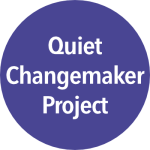CharityVillage is one of the core resources to the Canadian nonprofit sector, one that I recommend to so many people interested in working in the nonprofit sector. They are turning 20! Which is amazing considering they are web-based. What websites are you familiar with from 1995?
As part of their 20th birthday celebration, I am answering their ’20’ questions. Not actually 20 questions, but all on the theme of ’20’.
What’s the biggest change you’ve seen in the sector over the past 20 years?
The internet. Truly. At a basic level it has changed how the sector fundraises, engages volunteers, communicates with its supporters. But even more fundamentally it has changed the structure of organizations. It means we are increasingly distributing leadership away from central offices, creating flexible work environments, and producing organizations that exist completely online.
Where do you see the sector 20 years from now?
Most definitely we’ll see fewer big, place-based organizations and more initiatives that succeed because of networks of individuals.
What I hope to see, though, is a culture of collaboration, sharing and risk-taking in service of our important missions, and less protection, competition, and risk-aversion.
What I hope to see most is most organizations going out of business because capitalism evolves to minimize the negative external impacts of business, government policies protect vulnerable people and environments, and citizens create the change they wish to see.
What’s the most creative nonprofit campaign you’ve seen in the past 20 years?
My favourite recent campaign is VOKRA (Vancouver Orphan Kitten Rescue Association) using Tinder to attract potential volunteers and adopters.
What could 20 volunteer hours do for your organization?
I’m outgoing chair of Canadian Women Voters Congress, and 20 hours could be used in so many different ways! Off the top of my head – help complete our rebranding, launch our honourary council, launch a digital ambassador program, spark campaign schools in 5 new communities, develop a robust onboarding program for new board members….so many ideas!
What impact could $20 from 20 people have through your organization’s work?
A total of $400 but, even more powerfully, 20 new supporters. It would cover costs for four women from underrepresented communities to get subsidized attendance to a campaign school. And those 20 supporters each convince five friends to help out, and on and on…wow!
What would you go back and tell your 20-year-old self?
At 20 I would be in my final year of my undergrad in science at UBC and producing/choreographing a production of Guys and Dolls as a residence advisor.
Re: my undergrad I would tell myself to take an extra year in order to take a bunch of classes that don’t count towards graduation but that interest me. Poli Sci. Organizational behaviour. Music. Geology. Architecture. Comp Sci.
Re: musical theatre I would tell myself to chill out. I was a control freak perfectionist back then (I’m now a recovering control freak perfectionist) and letting go of some of my quality standards would have let more people in.
What advice would you give to a 20-year-old starting a nonprofit career?
Negotiate salary and benefits. Learn things and achieve things outside your job descriptions. Learn how to run a good meeting. Don’t be afraid to leave your organization in order to learn more and move up. Get fundraising experience. Soak it in!
What one thing should every nonprofit professional do for 20 minutes every day?
Plan their day. Ideally based on a weekly plan. Building a weekly plan helps you outline how you are going to move important things forward, and building your daily plan from that weekly plan ensures you don’t just get urgent things done (email, meetings) but also make big things happen!
What was the best (or most embarrassing) 20 minutes of your nonprofit career?
Hmm. It’s less than 20 minutes, but both great and kind of embarassing. I had facilitated a strategic planning session for a community foundation and it went really well. One of the board members ran into my mom and told her that she should be really proud of me.
Fill in the blank – 20 years ago, I was using my computer to _____.
In 1995 I was 15 and my family didn’t have a computer yet. I think by 1996 we had a computer and got internet for Christmas. My parents had give the clue “ocean” and my younger sister hoped that we were getting jet skis. Ha! Instead the clue referred to “surfing the web.”
I can remember using the computer for writing a chemistry report on HIV/AIDS, trying to play Myst but not really getting it, and joining a chat room but, again, not really getting it and never coming back.
Favourite song from 20 years ago or when you were 20?
I got my first CD player 20 years ago. I wanted the first song I played on it to be really meaningful. It was “Hand In My Pocket” by Alanis Morissette.
https://www.youtube.com/watch?v=LQ8D5Ihe4hg
How has CharityVillage impacted your career and work over the past 20 years?
I’ve found jobs on CharityVillage. I’ve recruited volunteers and contractors on CharityVillage. I’ve written for CharityVillage. I’ve been quoted in CharityVillage. I’ve recommended CharityVillage!

